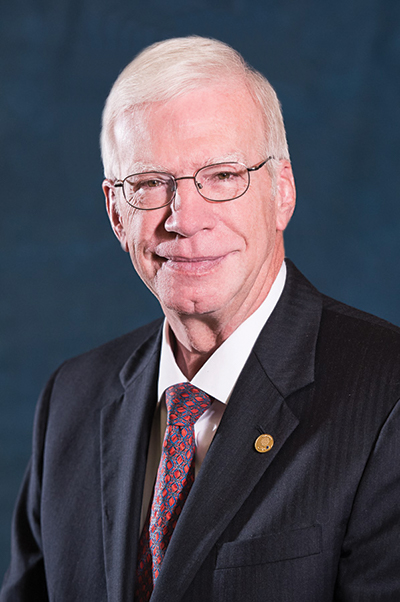
R. Bruce Williams, MD
For me, friendships formed and lessons learned have more than compensated for the effort invested over the years on CAP committees, but make no mistake: When we meet, what we’re doing is work. The professional engagement is enjoyable, but a person can get tired toward the end of a two-day meeting, not to mention homework in the evenings.
At such times, I can always reboot by resurrecting the memory of a tumor board meeting about six months after we introduced the first CAP cancer protocols in our practice. Feedback had been sparse; we’d had no complaints, and that was good. But I knew what had gone into those protocols. At the very least, I felt, we had earned a banner over the hospital entrance.
Well, as we say in my family, if you don’t know, ask. So one day at tumor conference, I asked the crew of oncologists, internists, radiation oncologists, radiologists, oncologic surgeons, general surgeons, breast surgeons, gynecologic oncologic surgeons, urologists, family practitioners, and others sitting in the room what they thought about the new protocols. My question elicited an overwhelmingly positive response—the most positive response I’ve ever gotten in tumor conference to anything I’ve ever said! Everybody agreed the reporting templates had greatly increased the effectiveness of communication between pathologists and physicians in all these fields because they could now quickly find what they were looking for. We had 13 different pathologists writing narrative reports back then, and it seems the clinicians often had trouble finding what they needed. Now everyone knew where to find their nugget and could be certain it was included. That was a good tumor conference.
All of which is to say that I am a big believer in the cancer protocols. They are based, of course, on the American Joint Committee on Cancer staging manual, the most recent edition of which was implemented Jan. 1. We’ve had enough time with it now to confirm that the new edition is more ambitious, impressive, and perhaps even more groundbreaking than its predecessors.
The eighth edition features 12 entirely new staging systems and reflects the input of a greatly expanded team of international experts. It comprises 83 chapters, was three years in the making, and represents the work of 434 individuals from six continents, 23 countries, and 188 institutions. There is a searchable electronic version incorporating additional staging forms and other supplementary resources. It’s a big step up.
Anyone who has given the first chapter a thoughtful read (or watched the Dec. 14, 2017 CAP webinar given by Mahul B. Amin, MD, editor-in-chief of the staging manual, and Thomas P. Baker, MD, who chairs the CAP Cancer Committee) knows that this edition creates a new and inclusive gestalt. Members of 18 expert panels represent every cancer specialty. Another seven “cores” are home to experts in crosscutting disciplines such as precision medicine, evidence-based medicine and statistics, and content harmonization. These multidisciplinary resource teams bridge all disciplines, advising and encouraging transparent and useful give-and-take around staging, characterization, and utility.
I am pleased to note that Dr. Amin, professor and chair, Department of Pathology and Laboratory Medicine, and Gerwin endowed chair for cancer research, University of Tennessee Health Science Center, is a former chair of the CAP Cancer Committee. The decision to appoint Dr. Amin editor-in-chief says good things about the American College of Surgeons, which provides administrative support to the AJCC. Their choice of Dr. Amin, the first pathologist (in eight editions spanning almost five decades) to take on this honorable and pivotal task, is a credit to our specialty.
One reason, no doubt, is his ability to articulate the integral role of anatomic and clinical pathologists in cancer diagnosis and treatment. Dr. Amin knows how to explain to nonpathologists that our ability to work with the tools of molecular diagnostics enables more accurate subclassification at the patient care level. He can capture the ways that pathologists understand data mining and how it is employed to investigate potential treatment alternatives. He can help other specialists understand just what we do.
Whenever the AJCC releases a new edition of the staging manual, the CAP Cancer Committee uses it to create or revise the CAP cancer protocols. Subspecialty teams manage the 63 CAP protocols and 14 biomarker templates. We released last summer the revised versions of 52 CAP cancer protocols that harmonize with the eighth edition.
The cancer protocols are a big project within the CAP; they are among the best things we do for our patients and our specialty. The Cancer Committee reports to the CAP Council on Scientific Affairs, chaired by Raouf Nakhleh, MD. Volunteers on the CSA and the Cancer Committee support Dr. Baker and Dr. Nakhleh to ensure our protocols provide all necessary information without burdening pathologists with irrelevant reporting criteria. Because the CAP volunteers who write the protocols are practicing pathologists, they know that sometimes too much is too much. Succinct, synoptic reports enable our members to give managing clinicians a sharp, quick, complete picture of what they need to know to apply the new staging system at the point of care.
I am writing this on New Year’s Eve and thinking about all the ways the new edition offers a fresh look at our lives and our work. We can use the term “paradigm shift” only in retrospect, but I predict we will come to see the release of the eighth edition of the AJCC Cancer Staging Manual as a pivotal moment in the science of cancer care. This revision offers all of us—pathologists, surgeons, clinicians, and patients—the vocabulary and context required to communicate clearly and comfortably about cancer diagnosis, prognosis, and treatment.
Next month’s column will concern how the CAP pursues that goal when we harness the expertise of member volunteers to implement the manual through the CAP cancer protocols.
[hr]Dr. Williams welcomes communication from CAP members. Write to him at president@cap.org.
 CAP TODAY Pathology/Laboratory Medicine/Laboratory Management
CAP TODAY Pathology/Laboratory Medicine/Laboratory Management
